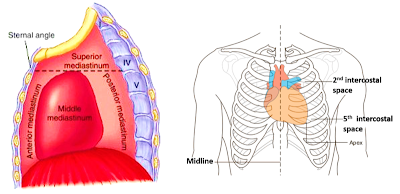This is defined as pain on the plantar surface of the heel and is the most common cause of posterior heel pain
Anatomy
The plantar fascia is a long, thin ligament that lies directly beneath the skin on the bottom of your foot. It connects the heel to the front of your foot, and supports the arch of your foot.
Plantar fasciitis has been linked to excessive stress placed on the tissue as a result of athletic activity, muscle weakness or tightness, improper shoes, increase in body weight, aging, inadequate footwear and occupation.3 Plantar fasciitis is usually not the result of a single event but more commonly the result of a history of repetitive micro trauma combined with a biomechanical deficiency of the foot. Finally, degenerative changes that come with age, such as atrophy of the heel fat pad, may also increase ones risk.
Mechanism for development of plantar fasciitis:
Most likely this number is in the thousands. With each
step, the load of the body weight to be applied to the arch causing the arch to drop. This drop in the arch makes the ball of the foot and heel to spread further apart. The fascia in the foot goes into tension to resist this force. If this tension in the fascia is greater than the fascia can handle, the fascia is damaged and the area will become inflamed. The load applied to the foot is divided into two types: Intrinsic load stems from the muscles contracting to move the foot. Much of the intrinsic load applied to the fascia results from the calf muscles. The plantar fascia is part of a larger structure termed the CT band (CT is an acronym for Calf to Toes). The main components of the CT band are the calf, Achilles tendon and plantar fascia. All these components are linked so that tension on any part of the CT band increase tension in the entire system. Of the 3 components of the CT band, the plantar fascia is the weakest link. Extrinsic load refers to all the other loading factors in the plantar fascia other than the intrinsic load. Some of these factors are body weight, frequency of steps, and duration of standing
Clinical Features
The patient complains of pain in the heel, which is more in the morning. It gradually subsides as the patient takes a few steps. The pain increases on prolonged standing, walking, etc.
Clinical Tests
Tenderness can be elicited on the medial aspect of the posterior heel. Passive stretching of the toes increases pain in the heel
Mystifying facts: Why is plantar heel pain more inthe morning?
During sleep, foot is in plantar flexed position causing shortening of the plantar structures. Sudden dorsiflexion in waking up from the night’s sleep stretches the structured abruptly causing pain.
Types of Plantar Fascitis
• Insertional plantar fascitis
-Called the heel pain syndrome
-Pain is felt at the medial calcaneal tubercle
(Point tenderness)
• Diffuse plantar fascitis
-Pain felt diffusely over
the heel and the sole of the foot
Radiographs
Consisting of the routine AP, lateral and oblique views is advised. However, the X-ray does not show any changes in plantar fascitis. It helps to detect calcaneal spur and other heel pathologies.
Treatment
Quick facts: Treatment of plantar fascitis in a nutshell
I line
• NSAIDs.
• Heel pad/cushion.
• Stretching exercises of the ankle and foot.
II line
• Local infiltration of hydrocortisone.
• Custom moulded foot orthosis.
• Soft supportive shoes.
• Foot strapping.
• Stretching exercises.
• Night brace or AFO or short leg walking cast.
III line
Surgery if the entire regime mentioned above fail after one year.
• Measures to reduce pain and inflammation taping,temporary or permanent shoe orthosis, heel cushion, weight management, etc.
• Measures to improve the neurodynamics of the tibial nerve—active calf muscle stretching and calf soft tissue mobilization.
• Joint mobilization with talocalcaneal glides.
• Strengthening the muscles that support the arch namely the posterior tibial, peroneal and intrinsic muscles.
• No response to conservative treatment for three months—LIHC (local infiltration of hydrocorti-sone) is indicated.
• No response to conservative treatment for 6 months—surgery (partial plantar release) is advised.
What is new?
• Endoscopic plantar fasciotomies have a success rate of 85 percent.
• For recalcitrant heel pain instead of surgery 1000 impulses of low energy extracorporeal shock wave treatment (3 applications) is found to be effective.











 
 
 
 



